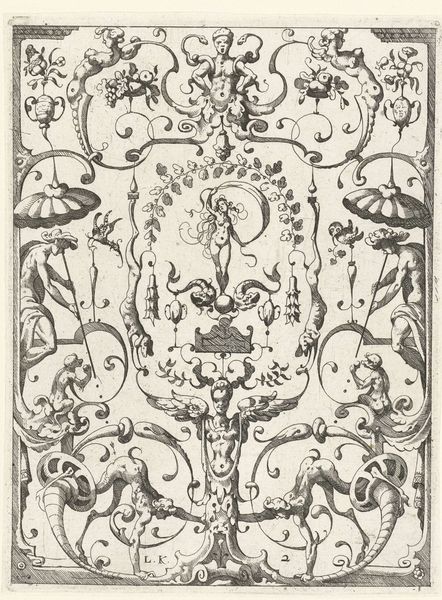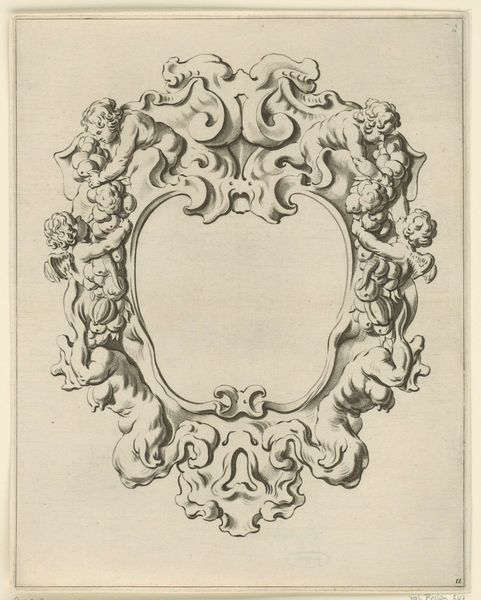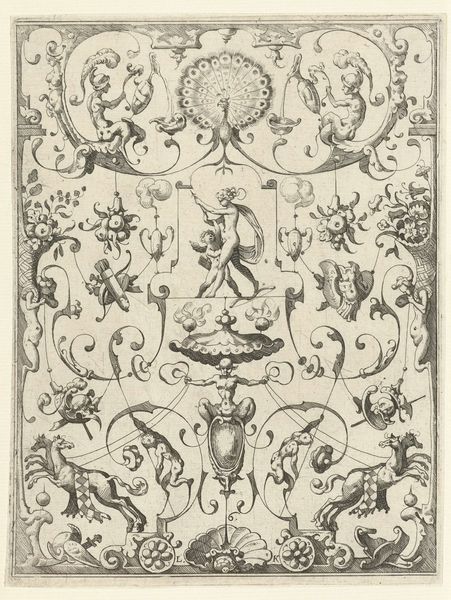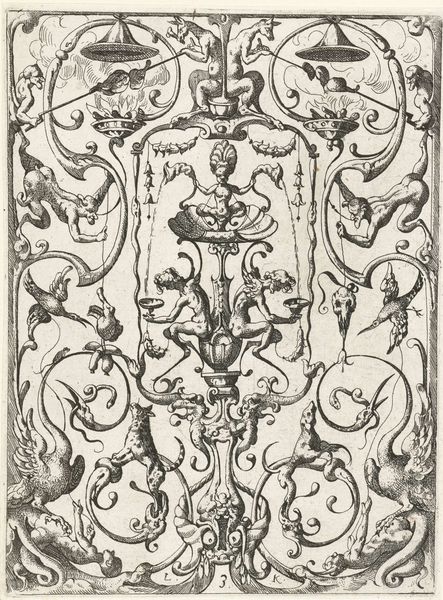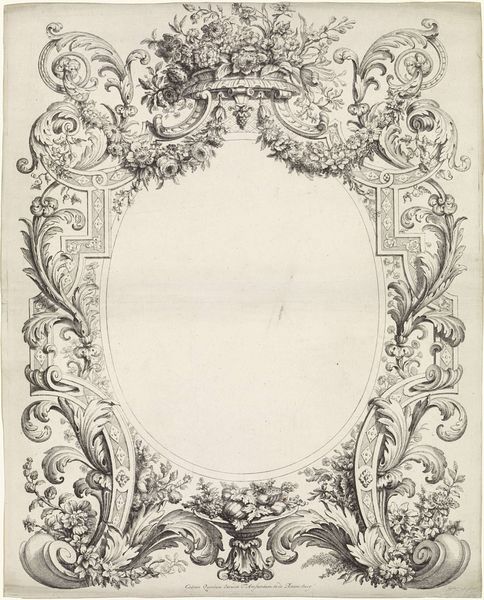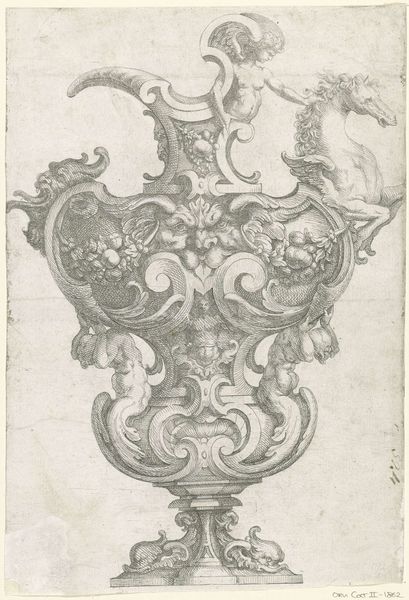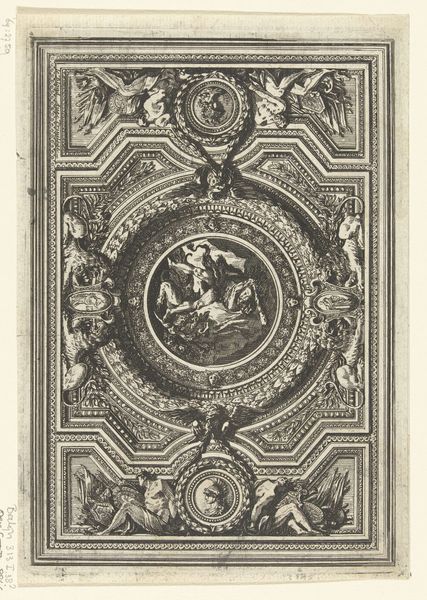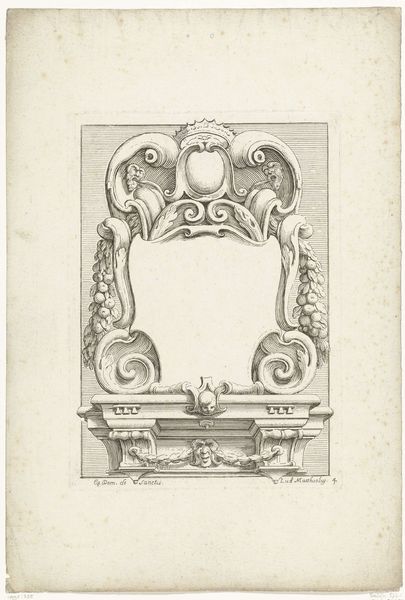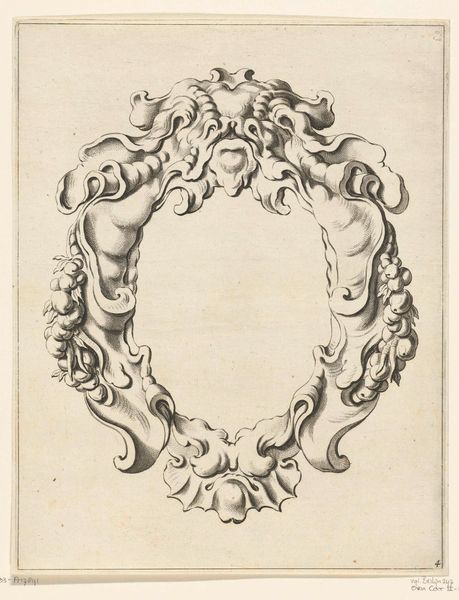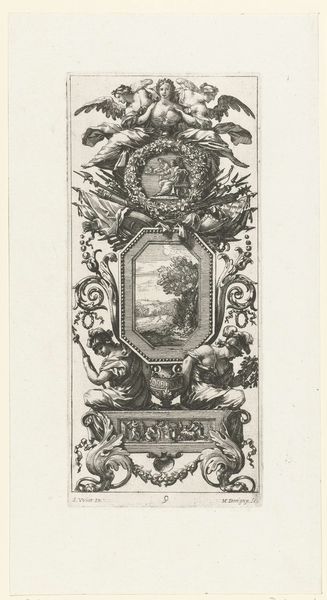
drawing, print, engraving
#
drawing
#
natural stone pattern
#
rippled sketch texture
#
baroque
#
pen drawing
# print
#
pen sketch
#
old engraving style
#
form
#
pen-ink sketch
#
line
#
pen work
#
decorative-art
#
coloring book page
#
engraving
#
doodle art
#
intricate and detailed
Dimensions: height 236 mm, width 159 mm
Copyright: Rijks Museum: Open Domain
Curator: This engraving, "Twee cartouches tussen bladranken," or "Two Cartouches Among Leafy Scrolls," was created by Jean Lepautre sometime between 1682 and 1734. It is currently held here at the Rijksmuseum. Editor: Immediately striking is the level of detail, the ornate embellishments—it almost feels overwhelming, as if too much is competing for attention. But somehow the eye is drawn through the piece. Curator: It’s representative of the late Baroque period and would likely have served as a model for other artisans, a kind of template. Think furniture makers, stucco workers... someone looking for inspiration in surface decoration. Editor: Right, a blueprint for luxury. Focusing on Lepautre’s material choices, the stark contrast of the ink on paper underscores the intricate play of light and shadow, almost mimicking the very depth it aims to depict. Was this widely accessible or relatively exclusive given printmaking capabilities at the time? Curator: Well, prints certainly made designs more accessible than, say, unique painted works. The scale of production indicates an expanding market for decorative arts reaching beyond the aristocracy, touching a broader class seeking to emulate that luxury. Editor: The cherubic figures and flourishing leaves framing the cartouches... beyond pure decoration, is there symbolic content here? Curator: Beyond generally alluding to wealth and sophistication? There could be allegorical meaning embedded in the iconography—perhaps a celebration of the senses, with the flora representing nature's bounty and the putti embodying innocence and pleasure. Editor: Interesting. For me, though, the composition is masterful in how the upper and lower cartouches offer a contrast. The top one is more curved, flowing. The lower one is squared-off, with a different energy imparted by the inclusion of human figures. This deliberate use of asymmetry within an overall symmetrical design… it's clever. Curator: Exactly. The dialectic created through form speaks volumes about the evolving tastes of the period, hinting at a move away from purely classical ideals toward a more dynamic aesthetic experience influenced by social shifts and growing patterns of consumption. Editor: Well, looking at it through the lens of form and composition has certainly changed my initial perception of "too much." Curator: And for me, considering it as part of the wider marketplace of luxury goods enriches my appreciation for its impact on material culture at the time.
Comments
No comments
Be the first to comment and join the conversation on the ultimate creative platform.
